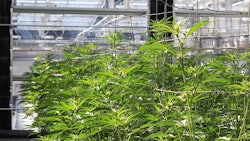Hi, I am Sarah Zelasky, Research Team Lead at Pacific Environmental Analytics (PEA). Last month, we discussed the critical role science can and should play in protecting and improving the delicate relationship between new neighbors, commercial Cannabis and wine. In this month’s Better Business Column, we are going to look at the importance of understanding odor thresholds and their relevance to the timely issue of Cannabis emissions regulations.
Whether it’s body odor or rotting leftovers in your fridge, an unpleasant odor is something we’ve all experienced from time to time. But what exactly causes odor, and how do we perceive it? Odor can be defined as the subjective experience humans have when our olfactory organs are stimulated by individual volatile organic compounds (VOCs) that have been emitted into the nearby air. And due to the subjectivity of the olfaction process, the VOCs that one person finds objectionable, another may find desirable. There are many types of VOCs that cause us to experience an odor (good or bad) – acetates, aldehydes, sulfurs, amines, and most common to Cannabis, terpenes. Further, just because one of these odor-causing VOCs is being emitted doesn’t necessarily mean that we will even experience an odor at all. This is due to a little-discussed phenomenon known as Odor Detection Thresholds.
Commonly referred to as ODTs, odor detection thresholds are a scientific name for the concentration at which a VOC’s odor will first be detectable by the average human nose. In the Cannabis world, scientists have attempted to quantify the ODTs of some of the major VOCs that are emitted from Cannabis plants. For example, a-pinene was found to have an ODT of ~0.018 ppm (parts per million), and limonene had an ODT of ~0.038 ppm (Abraham et al., 2011). When looking at these values, it is important to note that while these thresholds are both relatively low, they are not the same – a-pinene has a lower ODT than limonene. This means that a-pinene will produce noticeable odors at smaller concentrations than limonene. In other words, a-pinene is more potent than limonene. Therefore, if a cultivator were to measure that one of their Cannabis plants emits 0.019 ppm of a-pinene and 0.037 ppm of limonene, we would smell the a-pinene (because 0.019 > ODT of 0.018) but we would not smell the limonene (because 0.037 < ODT of 0.038) despite limonene being present in a higher quantity than a-pinene.
While many may believe that the Cannabis VOCs emitted in the largest amounts must be responsible for the majority of odor being perceived, the example between a-pinene and limonene shows that this is not necessarily true. It is possible that some compounds present in large quantities may have no odor; whereas, other compounds present in smaller quantities may have a very strong odor. Furthermore, recent PEA client-projects have yielded interesting findings supporting one potential hypothesis that compounds present in smaller quantities in the plant may actually be more responsible for the pervasive odor. Because of this, it is important for cultivators and regulatory bodies not to conflate the mere presence of VOCs with the existence of an odor. Rather, it is necessary to measure the emission rates of individual VOCs and compare them to published ODTs in order to properly assess if an odor-causing compound is actually causing an odor. Only then can proper regulations of both odor and emissions be based on applicable standards that treat odor-causing VOCs individually with regard to their odor potency.
The story of Cannabis odor is a complicated one due to its inherent subjectivity and relatively low thresholds for detection. To fight this uncertainty and ensure that Cannabis emissions regulations target those VOCs that are actually the odor culprits, we need solutions that take away the subjective nature of odor and equip regulators with critical information to aid in the careful crafting of regulations. The importance of ODTs in objectively quantifying odor cannot be overstated. Only through the use of chemical-specific ODTs and predicted gas phase emissions concentrations from specific Cannabis strains can accurate odor monitoring and compliance be assured.
























